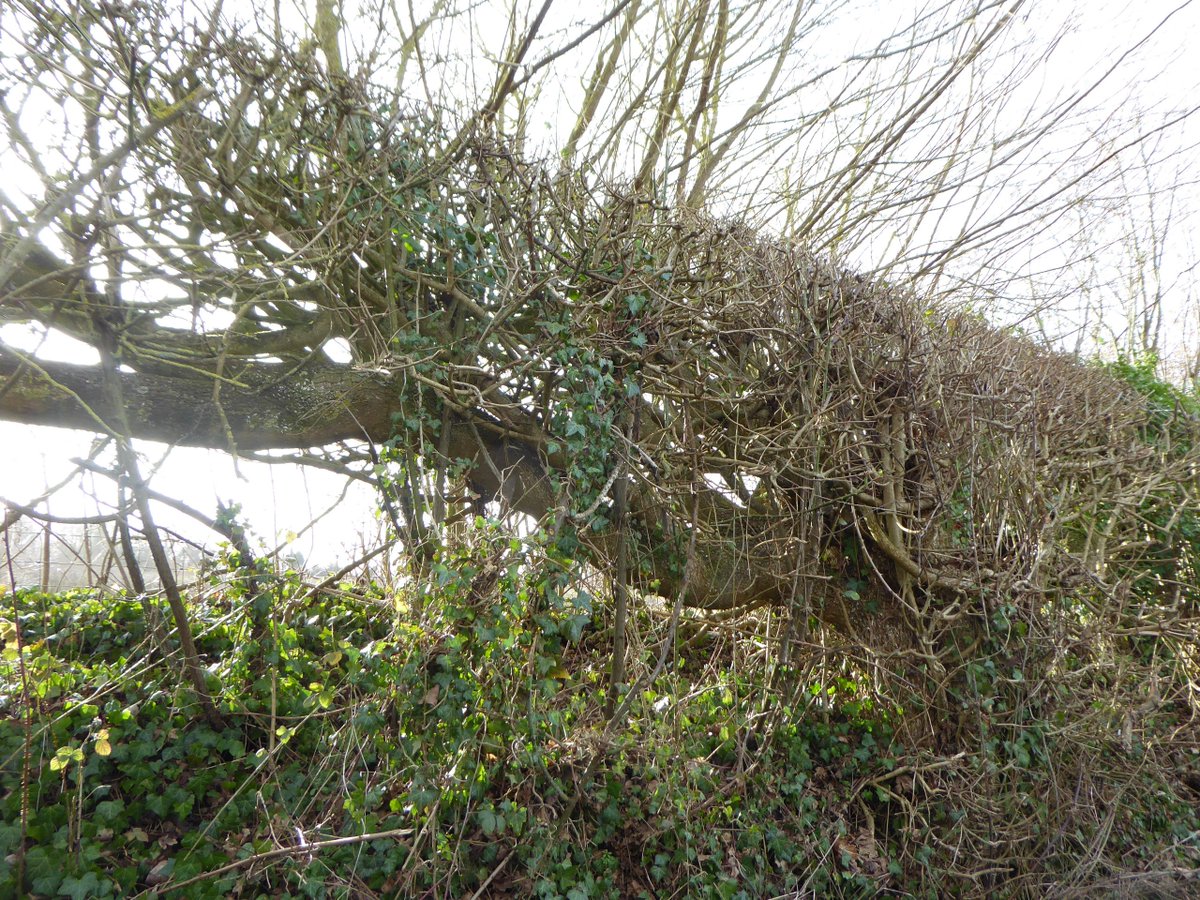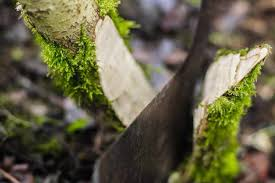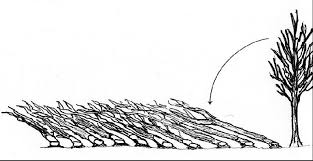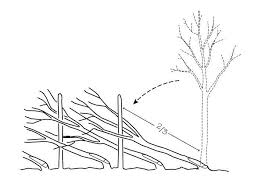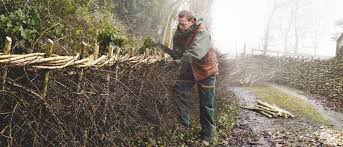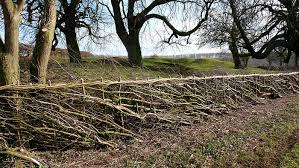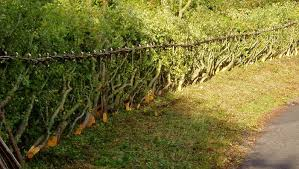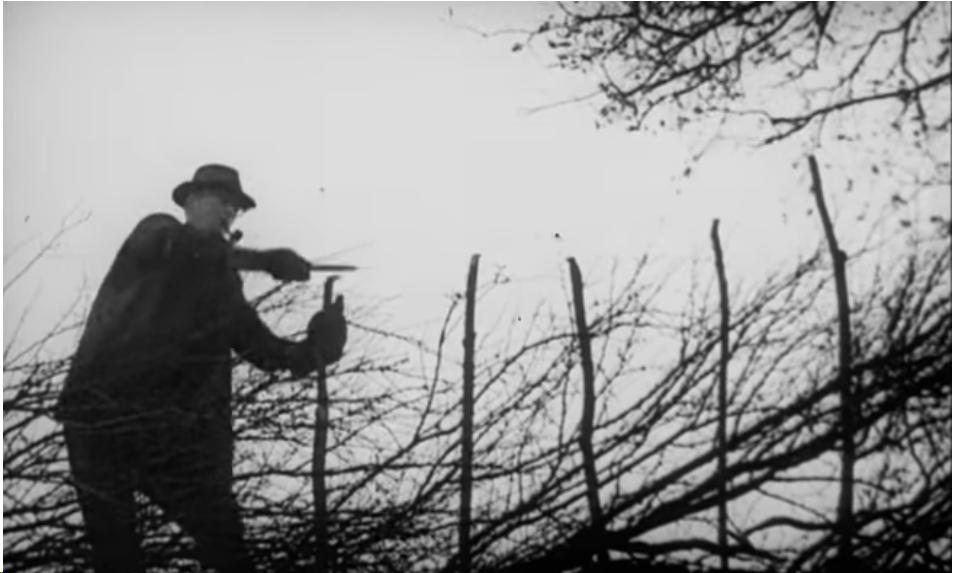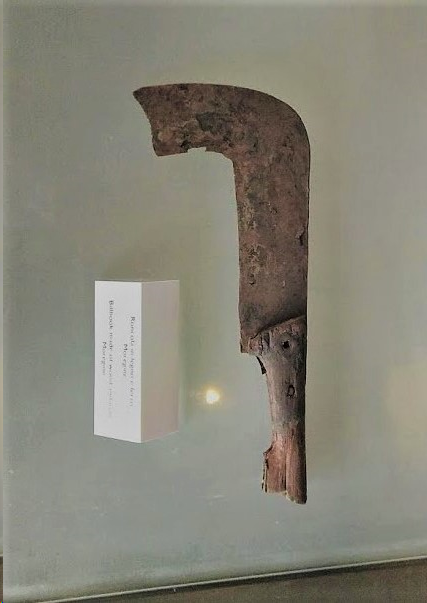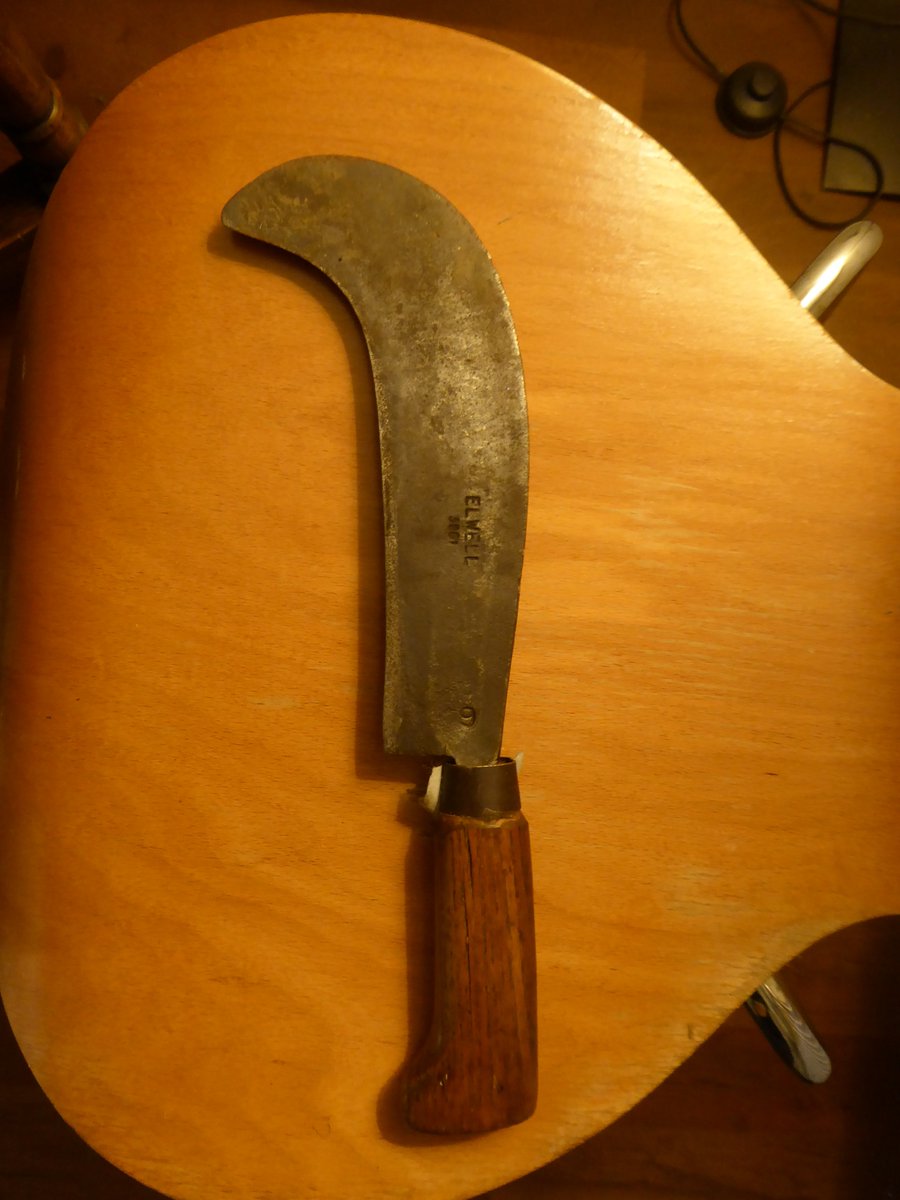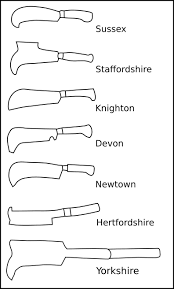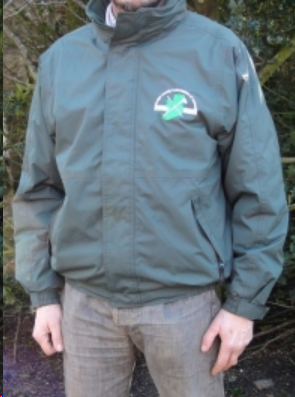One of the things I like to see while out walking: signs of hedges having been laid (also called pleaching) many years ago:
Hedge laying doesn& #39;t mean hedge *planting*. It& #39;s done with existing hedges that have grown too leggy and gappy. It makes them stockproof (keeps grazing animals in) once again, and keeps them bushy, thick and full of life.
It& #39;s done by cutting into the stems/trunks of the hedge plants near the base, leaving only a thin layer of the bark and cambium - just enough that the plant can still live, and thin enough to bend the whole thing over to the horizontal.
(I& #39;m shamelessly nicking images off the internet here, but the photos in the first tweet were mine, taken near Godmersham.)
Once laid over, the plants are then pegged helped to stay in place with hazel rods knocked into the ground to about chest height.
Then much longer, flexible, hazel or willow rods are woven horizontally between the vertical stakes and then tamped down tight.
The results can be really beautiful, and all around the UK there are different regional styles and methods.
After many years, those stems that were bent horizontal might continue to grow and thicken, which I believe is what you can see in the photos in my first tweet. Look out for these tell tale signs that a hedge has been laid in the past.
Sadly, a newly laid hedge is now a very rare sight in the British countryside. Landowners prefer not to go to the expense of paying for pleaching, so our hedges are growing gappy and leggy and losing much of their value as wildlife corridors. A neglected hedge is a sorry sight.
This is such a wonderful video, from 1942. The speed at which this old pro does the job - with just hand tools - is astonishing. And the precision with which he cuts into little stems with his billhook without cutting right through is incredible. Not easy! https://www.youtube.com/watch?v=WoprVhpOKIk">https://www.youtube.com/watch...
You can help keep this tradition alive. Why not have a go yourself. There are short courses, for example through the South of England Hedge Laying Society, or check for similar in your own region. http://sehls.weebly.com/ ">https://sehls.weebly.com/">...
The billhook is the traditional tool for hedge laying. I& #39;d always thought of them as a traditional British tool. But then I visited Pompeii in December, and lo and behold... That& #39;s the 2000-year-old billhook on the left, my English one on the right. What have the Romans ever etc
As my Irish citizenship application will be in the post soon, I& #39;d really better mention that hedge laying is not just a British tradition. There& #39;s also a fine tradition of it in Ireland. http://www.hedgelaying.ie/ ">https://www.hedgelaying.ie/">...
tbh I& #39;m only applying for citizenship in case I need it for getting my hands on a Hedge Laying Association of Ireland jacket.
You can geek out on the regional styles in the UK here: https://www.hedgelaying.org.uk/pg/info/styles.aspx">https://www.hedgelaying.org.uk/pg/info/s...
And check out this really wonderful one-minute time-lapse video of a hedge being laid: https://vimeo.com/297611605 ">https://vimeo.com/297611605...
Callback to earlier in the thread and the Pompeii billhook that looks a lot like mine, this site says they were used in Britain before the Romans arrived. But also that Roman ones probably developed from those in earlier Greek civilisation. https://www.billhooks.co.uk/history/roman-billhooks/">https://www.billhooks.co.uk/history/r...

 Read on Twitter
Read on Twitter
